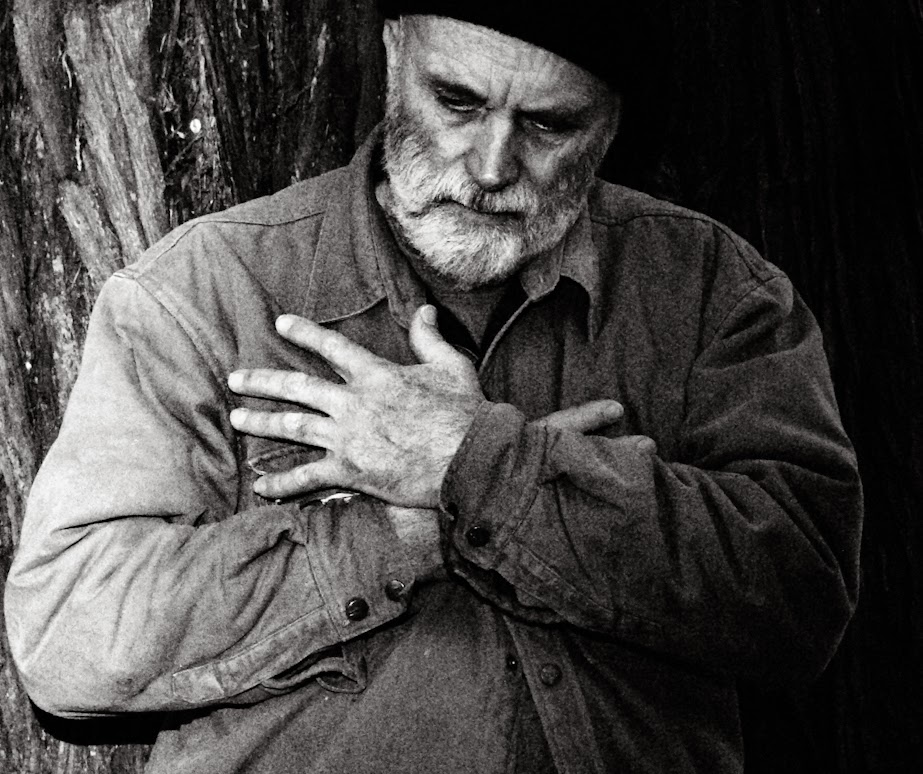You
must be AWARE.*
Hans
Hofmann
Sometimes
we see the perfect photographic opportunity and snap away only to
find later that low light has messed up our image. Our camera, if on
auto iso, may have simply boosted the sensitivity to the point that
we have little coloured dots over everything. If we have set our iso
to say 200, we may find that our camera has automatically slowed the
shutter speed to balance things up and we have a blurred image either
from subject movement or ( most likely), camera shake. The program in
the camera is trying to produce a 'normal' looking image from an
abnormally dark subject and we must find a way to work around this.
(The best computer is the mind itself.) If we use exposure
compensation to override this problem, closing the aperture some
more, we get a darker, low key*image that will match the feeling of
the scene.
In
most cases however, we find that there is no substitute for a well
exposed photograph and to get that in low light conditions requires
adding more light, either artificially with lights of various sorts (
don't forget the humble flashlight), a flash unit, or by redirecting
light by way of a reflector. Here are some examples.
Practising with my Speedlight, using a tripod and myself as subject, I chose the dark shadowy area beneath some cedars. I set the camera time exposure for a 10 second delay ( I also have a remote shutter release if needed.) and stepped quickly into position. I chose to bounce the flash to one side so it would reflect back on the subject from a side angle. I have a 4x4 foot piece of white hardboard as a reflector for this purpose, but this time choose to bounce the flash off a cedar tree instead. The resulting lighting is softer, more diffused, (because the reflecting surface is textured bark), and matches the reflective pose I have struck.
One
can bounce a flash off anything; but it will reflect the colour of
what you bounced it off. In my studio I once got a lovely golden glow
from bouncing off the varnished inside of my wood and canvas canoe!
Of course I use my on-camera flash if I must, and have experimented
with using tissues as a diffuser or a small mirror to bounce off the
ceiling or wall.
My
grand daughter is down at the beach, the morning sun is glancing off
the ocean and beach stones. She squints, her face is broken into
strongly defined areas of light and dark. And then she steps under
some dark trees. The reflected light off the beach has bounced into
the shade. Perfect! If the light had been off calm water, it would
have been strong and glaring but here the pebbled surface of Beddis
Beach formed just the right reflector.
The
more we experiment with light in a purposeful way the more
possibilities we become aware of for our camera work. We also
experience the world in a more intense way and whose to say which in
the end is the more important.
*Low
and high key are terms that describe the general effect of the
light in your image. High key would be at the upper end of the tonal
scale and low key, as in the forest photo, is at the lower end.
Matching the tonal scale to your subject is always one aspect of
making an image that communicates what we perceive the subject is all
about. This image is all about the darkness under the trees, not
about the trees in themselves which are the subject matter.
*
Hans Hofmann taught painting, but much the same attitude applies to
the other visual arts as well. No matter how much equipment we have,
our effectiveness as a photographer still hangs of our ability to be
aware, super aware, of our surroundings. That awareness has multiple
part to it; how we 'know' the world determines what we are able to
'say' and how acutely our senses are honed, our awareness, determines
what we are able to see. And seeing is the key to all.
.jpg)
.jpg)
.jpg)
.jpg)
No comments:
Post a Comment